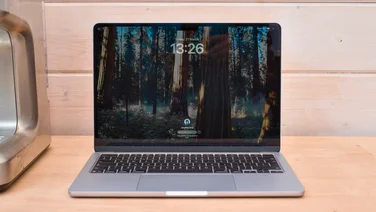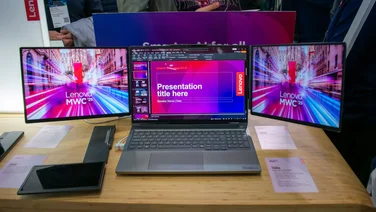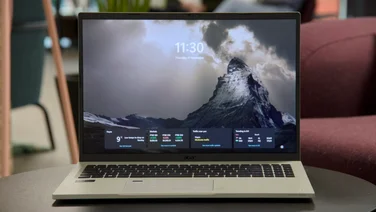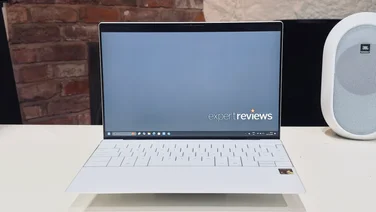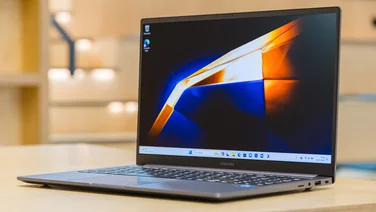To help us provide you with free impartial advice, we may earn a commission if you buy through links on our site. Learn more
- Huawei MateBook X Pro (2019): What you need to know
- Huawei MateBook X Pro (2019): Price and competition
- Huawei MateBook X Pro (2019) review: Design and features
- Huawei MateBook X Pro (2019) review: Keyboard and touchpad
- Huawei MateBook X Pro (2019) review: Display
- Huawei MateBook X Pro (2019) review: Performance
- MateBook X Pro (2019) review: Verdict

















- Beautiful 3:2 aspect ratio display
- Excellent battery life
- Slim, lightweight, well-built
- Huawei ban may impact Windows updates
- Slower than MateBook 14
- Dynamic contrast can't be disabled
NEWS UPDATE: Future of Huawei laptops unclear after US Huawei trade ban
In the wake of the USA’s Huawei trade ban, the future of Huawei laptops is in doubt. The US government has already ordered Google to cease working with Huawei, spelling an end for Android updates on all Hauwei phones as well as the handsets of its subsidiary, Honor.
If the same action is taken with Microsoft then it could mean that Huawei’s laptops (such as the MateBook X Pro) will no longer receive Windows updates, which has serious implications for user security. Due to the trade blacklisting, Huawei will be unable to use US-made laptop components either, including those made by Intel and Nvidia.
Our original review continues below.
The Huawei MateBook X Pro was one of my favourite laptops of 2018. With its incredible display, slim, well-made chassis, decent performance and battery life, it was a notebook with very few flaws.
In fact, I used the original for an entire year. It was the first Windows laptop Id been able to comfortably rely on after years of exclusively working on a MacBook Pro and there were very few times that I felt the urge to go back to the Apple fold. Only recently has the MateBook begun to irk me, as the Backspace key developed a hairline crack and I began to experience the odd crash here and there.
READ NEXT: The best laptops to buy today
Huawei MateBook X Pro (2019): What you need to know
Perhaps Huawei knows its flagship laptop isnt quite perfect; thats the implication, anyway, when you pick up this years update for the first time. Aside from a change to the logo on the lid (from a logo to a big HUAWEI stencilled in plain text), the laptop looks identical. It’s very much an iterative update.
The key differences are contained within this years MateBook X Pro: theres a new range of eighth-generation Intel Core processors, more RAM, extra storage and a new Nvidia MX250 graphics chip as well.
Huawei MateBook X Pro (2019): Price and competition
UK prices havent yet been confirmed for the Huawei MateBook X Pro, but we do know there will be two base models, costing ¬1,599 for the Core i5 and ¬1,999 for the Core i7 variants. The model I was sent for testing is fitted with a Core i7, which comes with 16GB of RAM and a 1TB NVMe SSD.
The MateBooks main competition on the Windows side of things comes from the superlative Dell XPS 13. Prices for the slightly smaller 13in Dell begin at ¬1,599 with the equivalent specification to the Core i5 MateBook X Pro and rise to ¬2,199 for the Core i7. Ive priced in euros using Dells Ireland website to make comparisons easier.

















Also worth considering are last years MateBook X Pro, which is available now for as low as £1,250 from Amazon, and the new MateBook 14. This non-pro MateBook isnt quite as svelte as the MateBook X Pro. It has a lower resolution 2,160 x 1,440 display and only a 256GB SSD, but the Core i7 model is ¬500 cheaper than the Core i7 MateBook X Pro and represents better value for money.
On the MacBook side, it isnt possible to specify something directly comparable since Apple uses slightly different (more powerful) CPUs, but the closest comparable specifications work out considerably more expensive. Youll be shelling out ¬2,099 (£1,749) for the 8th-gen quad-core Intel Core i5 model (8GB RAM, 256GB SSD); and a frankly stupefying ¬3,449 (£2,799) for the Core i7 13in MacBook Pro with 1TB of storage.
Huawei MateBook X Pro (2019) review: Design and features
Anyone familiar with the MateBook X Pro from last year will be absolutely at home the moment they clap eyes on this years model. Thats because, aside from the logo on the lid, theres not a hairs difference between the two laptops. And thats very much a good thing this is one attractive machine, especially in the moodier matte space grey colour.
It has the same barely-there bezels surrounding the 13.9in, 3:2 aspect-ratio touchscreen, along with identical Dolby Atmos-powered speakers flanking the keyboard to the right and the left, with further speakers pumping out sound via vents on the right and left edges beneath the chassis.
Despite its doppelgänger looks, the 2019 X Pro does feel almost intangibly more solidly put-together than last years model. The chassis is ever-so-slightly more rigid and the keys on the keyboard feel more softly damped. Its a subtly more luxurious device.

















Best of all, it remains just as surprisingly practical. While most other Ultrabooks are plumping for USB Type-C connectors alone, Huaweis machine adds a full-size USB Type-A port into the mix. This sits on the right edge and complements a pair of USB Type-C ports and 3.5mm jack, which both sit on the left edge. One is USB 3.1 and the other is Thunderbolt 3-compatible, but both are usable for video output and charging interchangeably.
Another feature inherited from the original model is the circular power button, which sits just above the keyboard on the right-hand side and doubles as a Windows Hello-compatible fingerprint reader. While I prefer face unlock on a laptop, this works almost as well. Im less keen on the 720p webcam, though. Although its positioning is neat its beneath a key on the top row of the keyboard (press it and it pops up) the quality remains poor and the up-your-nose angle-of-view is pretty unflattering.

















The other main difference between the 2018 and 2019 MateBook X Pro is the Huawei Share sticker that resides just below the cursor cluster in the right. Its not particularly nice to look at but dont be tempted to peel it off as its an NFC tag and enables one of the laptops new features: Huawei Share OneHop.
Tap your Huawei phone on the sticker and the idea is that youll be able to transfer photos, videos and documents in a snap.

















Huawei MateBook X Pro (2019) review: Keyboard and touchpad
As with 2018s MateBook X Pro, the 2019 version has a brilliantly usable keyboard. Its square, Scrabble-tile keys are well-spaced and have a good amount of travel, theres a nice, positive, well-damped finish to each keystroke and even the layout is nice and clean. Only the slightly fiddly up/down cursor keys provide any cause for concern. Trust me on this one, though: having used the previous model for some time, this is a foible thats very easy to get used to over time.
Likewise, the touchpad on this laptop is an absolute triumph. It might not have the technological advantages of, say, Apples Force Touch touchpad but its large and sensitive and its mechanical click isnt heavy or over-sensitive. Its great for all-day mousing of any kind, from spreadsheet legwork to photo and video-editing.

















Huawei MateBook X Pro (2019) review: Display
The biggest difference between the MateBook X and its cheaper sibling, the MateBook 14, is the screen. On the X Pro, youre getting an IPS display with an almost-square 3:2 aspect ratio and a resolution of 3,000 x 2,000 pixels. Its an absolutely glorious thing to behold: vibrant and crisp with deep, inky blacks, great contrast and wonderful colours Its searingly bright, too, peaking at 531cd/m².
It passed our technical tests with flying colours. Not only does the MateBook X Pros screen cover almost all of the sRGB colour gamut out of the box (95.9%), but colour accuracy in this colour space is pretty much flawless, with a Delta E of below one across all the colour patches we measured, for an average score of 0.54. In this test, the lower the number, the better and a score this low is almost unheard of.

















I do have one niggle with it, however. Out of the box, the MateBook X Pro employs dynamic contrast, altering brightness (even with auto brightness disabled) depending on the screen content. With a lot of bright and white colours on screen, peak brightness is boosted; when theres lots of dark content, the laptop drops the brightness by as much as half.
This can benefit battery life and it also prevents dark scenes taking on a washed-out look, but it can also be distracting when youre watching video, as the display brightens and darkens subtly from scene to scene. It can also make the screen very dim in some circumstances, which would be fine if you could turn the setting off.
Huawei MateBook X Pro (2019) review: Performance
Performance is also a mixed bag. On paper, it looks great. The model Ive tested has an eight-generation quad-core Core i7-8565U CPU accompanied by the latest mobile Nvidia GPU the GeForce MX250. Theres also a 1TB Samsung SSD and 16GB of RAM.
On its own terms, this results in a snappy feeling laptop that boots up quickly, launches apps very quickly and copes with pretty much anything you fancy throwing at it except, perhaps, 4K video editing and rendering in Adobe Premiere.
After running a few benchmarks, however, it quickly became clear to me that something slightly odd was going on.

Our in-house media and multitasking benchmarks shows that the Huawei MateBook X Pro, even with an updated CPU, performs at around the same level as the old X Pro and lags behind the MateBook 14, which has the same configuration as the new X Pro. Theres a similar trend in the Geekbench 4 CPU test, with this years X Pro slightly outperforming the original with multitasking.

The only clue to this difference I could find was when I fired up the Intel Power Gadget monitor, which revealed the TDP package limit for the Core i7 inside the X Pro had been set to 18W versus 25W for the MateBook 14. Interrogating last years MateBook X Pro in the same way reveals a TDP limit of 15W.
Gaming performance isnt all that much better, either, with the Huawei MateBook X Pro lagging behind the MateBook 14 once again.

The one area where the new machine significantly outperforms its predecessor is battery life. Here, the trend is reversed, with the latest MateBook X Pro outperforming the original by an hour for continuous video playback. Again, the MateBook 14 puts in a better performance here.

MateBook X Pro (2019) review: Verdict
Its clear from all of this that this years MateBook X Pro isnt a huge improvement over last years model. It feels a little better made and the specifications have been given a small bump but the performance improvements are marginal and lag noticeably behind the cheaper but chunkier MateBook 14.
Thats not to say you shouldnt look to buy one, however. The MateBook X Pro (2019) is a stupendously good laptop in every way imaginable. The screen is wonderful and the battery life is excellent. Its practical, quick, very slim and light considering the screen size, and its great to type on.
But, then, the same comments apply just as well to its predecessor, which you can currently buy for a much more reasonable £1,349 on Amazon, albeit with half the RAM and storage.
In short, then, the 2019 MateBook Pro is a great machine but it isnt the best choice for most users right now. It might be worth buying when the price falls in a few months perhaps there will be Prime Day or Black Friday deals in November but right now, last years MateBook X Pro remains the super-light laptop to buy.



